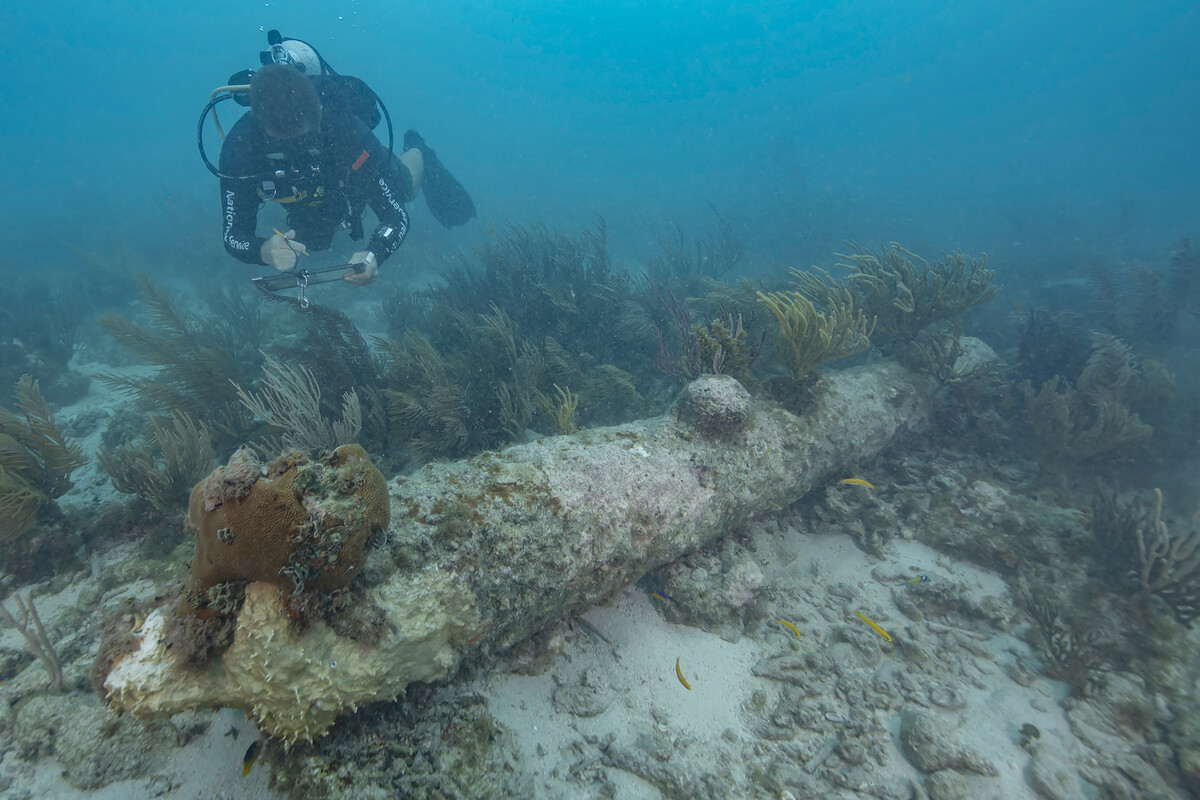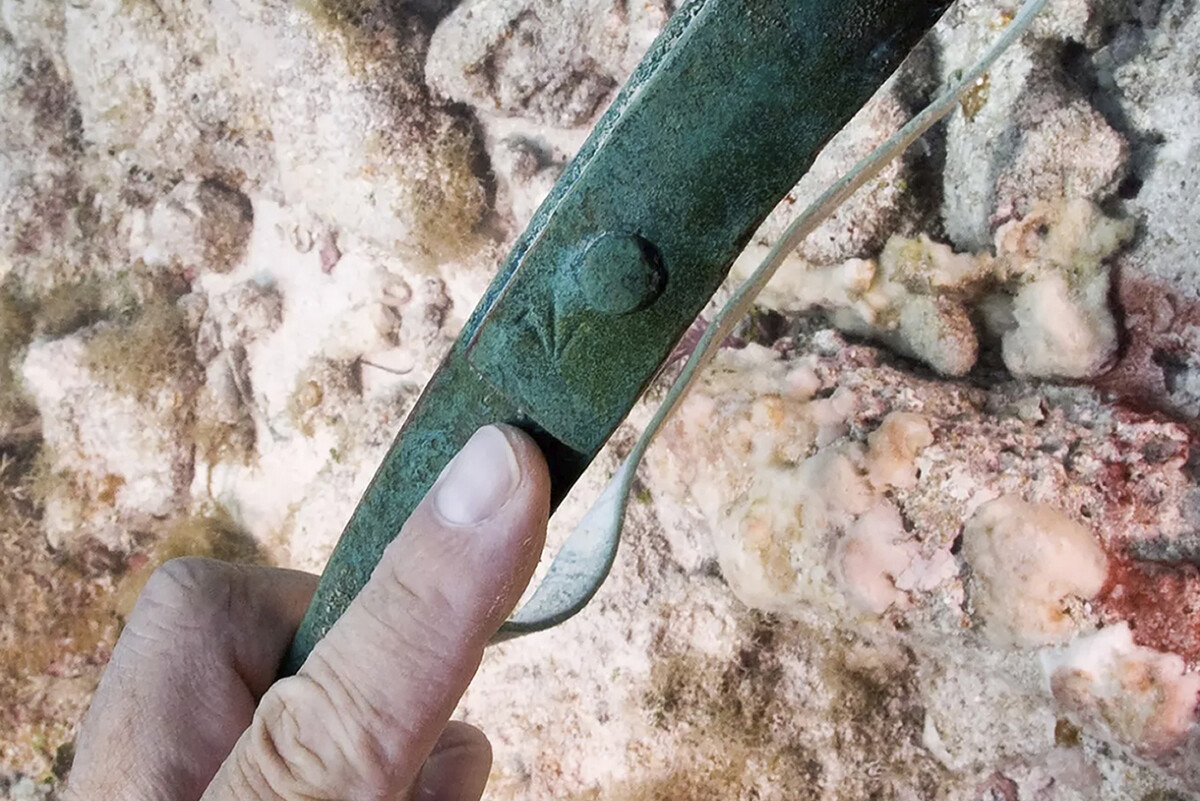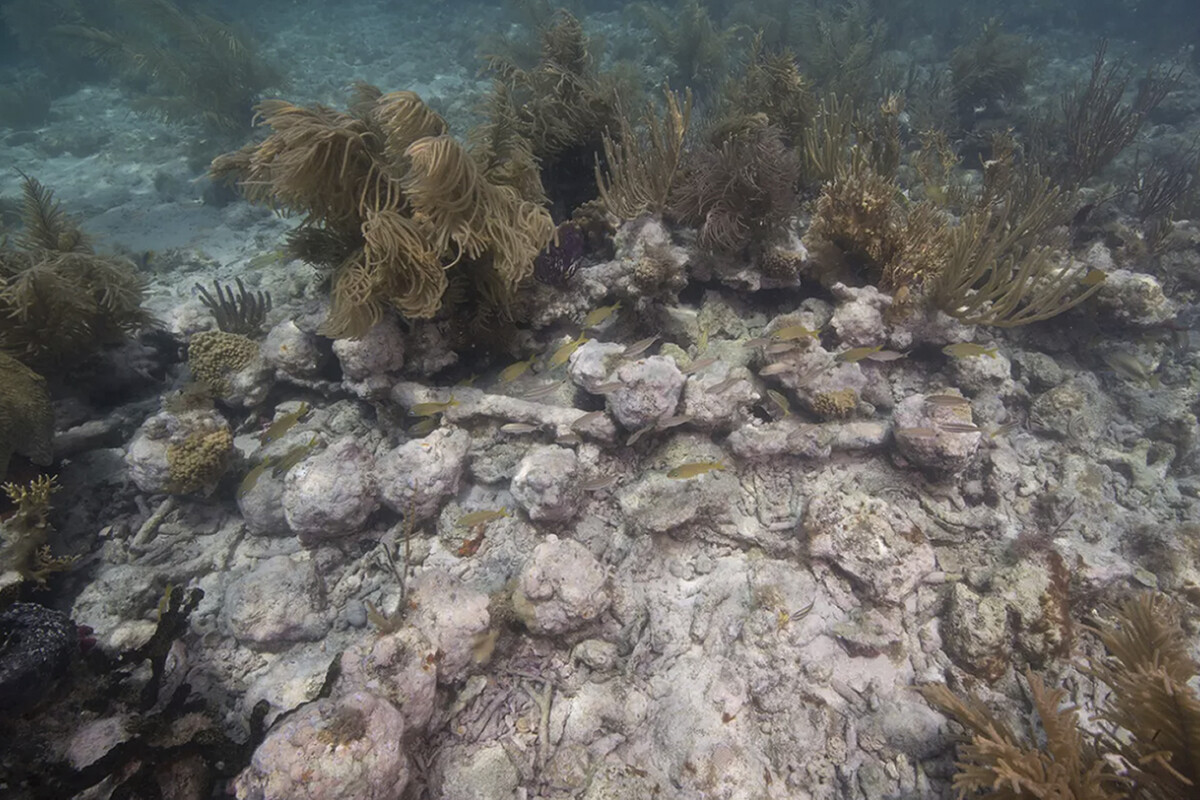
In this undated photo provided by the National Park Service, a park service diver documents one of five coral encrusted cannons found during recent archeological survey in Dry Tortugas National Park, Fla. National Park Service archeologists identified the archeological remains belonging to the HMS Tyger, an 18th century British warship. The Fourth-Rate, 50-gun frigate sunk in 1742 after it ran aground on the reefs of the Dry Tortugas while on patrol in the War of Jenkins Ear between Britain and Spain. While the remains of the historic shipwreck were first located in 1993, new research has uncovered definitive evidence. (Brett Seymour/National Park Service via AP)
KEY WEST, Fla. (AP) - A wrecked seagoing vessel discovered decades ago off the Florida Keys has recently been identified as a British warship that sank in the 18th century.
National Park Service archaeologists used new research to determine that the wreckage first spotted in 1993 near Dry Tortugas National Park is the HMS Tyger, the agency said in a news release late last week. The findings were recently published in the International Journal of Nautical Archaeology.
The HMS Tyger was a Fourth-Rate, 50-gun frigate built in 1647. It sank in 1742 after running aground on the reefs of the Dry Tortugas while on patrol in the War of Jenkins Ear between Britain and Spain.
"This discovery highlights the importance of preservation in place as future generations of archeologists, armed with more advanced technologies and research tools, are able to reexamine sites and make new discoveries," maritime archaeologist Josh Marano said in a statement.

In this undated photo provided by the National Park Service, a diver identifies a "broad arrow" marking on a copper barrel band denoting ownership by the British military during recent archeological survey in Dry Tortugas National Park, Fla. Copper barrel bands were used on small barrels of copper during the 18th century. National Park Service archeologists identified the archeological remains belonging to the HMS Tyger, an 18th century British warship. The Fourth-Rate, 50-gun frigate sunk in 1742 after it ran aground on the reefs of the Dry Tortugas while on patrol in the War of Jenkins Ear between Britain and Spain. While the remains of the historic shipwreck were first located in 1993, new research has uncovered definitive evidence. (Brett Seymour/National Park Service via AP)

In this undated photo provided by the National Park Service, concreted cannonballs on the seafloor are shown after they were found during recent archeological survey in Dry Tortugas National Park, Fla. National Park Service archeologists identified the archeological remains belonging to the HMS Tyger, an 18th century British warship. The Fourth-Rate, 50-gun frigate sunk in 1742 after it ran aground on the reefs of the Dry Tortugas while on patrol in the War of Jenkins Ear between Britain and Spain. While the remains of the historic shipwreck were first located in 1993, new research has uncovered definitive evidence. (Brett Seymour/National Park Service via AP)
Archaeologists surveyed the site in 2021 and found five cannons several hundred yards from the main wreck site, officials said. The guns were determined to be those thrown overboard when HMS Tyger first ran aground, leading archaeologists to confirm the wreck was, in fact, the remains of HMS Tyger.
After the ship wrecked, about 300 crew members were marooned for more than two months on what today is Garden Key. They erected fortifications on the island more than a century before the establishment of Fort Jefferson, which remains on the island today as a historical site.
Stranded survivors built seagoing vessels from salvaged pieces of the wrecked HMS Tyger and then burned the rest of the ship to prevent its guns from falling into enemy hands. The survivors used their makeshift vessels to travel 700 miles (1,125 kilometers) through enemy waters to British-controlled Port Royal, Jamaica.
The remains of HMS Tyger and its related artifacts are the sovereign property of the British government in accordance with international treaties.